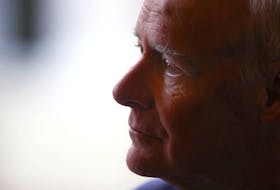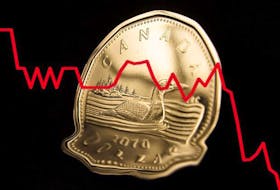Stephen Poloz oversaw the rescue and Tiff Macklem will pilot the recovery.
COVID-19 will have a say in whether the leadership transition at the Bank of Canada breaks as cleanly as that, but the central bank seems to think it’s possible.
Poloz, whose term ended at midnight on June 2, and Macklem, his successor, on June 3 released something of a joint interest-rate statement expressing confidence that the worst of the crisis was over, while indicating policy-makers were shifting their focus to bringing about a recovery.
“As market function improves and containment restrictions ease, the bank’s focus will shift to supporting the resumption of growth in output and employment,” the statement said. “The bank maintains its commitment to continue large-scale asset purchases until the economic recovery is well underway. Any further policy actions would be calibrated to provide the necessary degree of monetary policy accommodation required to achieve the inflation target.”
That direction would have been set on Poloz’s last day, but the statement noted in an addendum that Macklem participated in the governing council’s deliberations as an observer and “endorses” the outcome. The central bank’s leaders opted to leave the benchmark interest rate unchanged at 0.25 per cent and to scale back a couple of asset-purchase programs that have been little used in recent weeks.
Poloz, who describes himself as an optimist, stayed true to his character and left on a relatively positive note.
“Decisive and targeted fiscal actions, combined with lower interest rates, are buffering the impact of the shutdown on disposable income and helping to lay the foundation for economic recovery,” the statement said. “While the outlook for the second half of 2020 and beyond remains heavily clouded, the bank expects the economy to resume growth in the third quarter.”
In April, when the Bank of Canada last updated its outlook , policy-makers opted against making a pinpoint forecast, saying they preferred to avoid “false precision,” since the volatility of the situation made it impossible to chart a course with a reasonable degree of confidence.
They instead offered a range of possibilities, starting with a prediction that gross domestic product would decline between one per cent and three per cent in the first quarter from the end of 2019, ahead of an historic drop of between 15 per cent and 30 per cent in the April-June period from the fourth-quarter level.
From there, they said the economy could head in any number of directions, including a best-case scenario of a fairly quick recovery to a dire scenario where the economy takes several years to get back to where it was before the crisis.
The Bank of Canada remains unwilling to make a definitive statement about the future. Policy-makers said the economic impact of COVID-19 “appears to have peaked, although uncertainty about how the recovery will unfold remains high.” They also observed the global recovery will be “protracted and uneven” because countries will be relaxing their lockdowns on various schedules.
At the same time, they observed the Canadian economy appears to have avoided the most severe scenario they thought possible in April, adhering instead to a middle path.
GDP dropped 2.1 per cent in the first quarter, and could decline an additional 10 to 20 per cent this quarter, the statement said. That represents an upward revision, as the Bank of Canada now sees a decrease in economic output of between 12 per cent and 22 per cent this quarter from the end of last year.
“The BoC sees light at the end of the tunnel,” Sébastien Lavoie, chief economist at Montreal-based Laurentian Bank, told his clients in a note. “The worst is behind us.”
The central bank said it would taper a couple of its early bond-purchase programs: it will now swap bonds for short-term loans only once a week, and will offer to buy bankers’ acceptances bi-weekly. It will continue to purchase federal, provincial and corporate bonds as planned, ensuring a source of demand for at least a portion of the debt that governments and companies will issue to bridge the recession.
“The bank’s programs to improve market function are having their intended effect,” the statement said. “After significant strains in March, short-term funding conditions have improved.”
Assuming that funding markets remain stable, the debate will shift to what the central bank could do to stoke a faster recovery. Policy-makers, who are mandated to hit an inflation target of about two per cent, acknowledged the recession has dropped the annual rate of price increases to near zero.
With the benchmark rate essentially as low as it can go without seriously distorting the financial system, the next best option for the central bank is to increase its purchases of financial assets. So far, the goal has been simply to stabilize credit markets. But it could potentially stimulate demand by increasing the volume of purchases, or targeting a different mix of assets to keep downward pressure on a wider range of retail and commercial interest rates.
“We believe the Bank of Canada will continue to expand its balance sheet until the end of the year to support the recovery,” said Charles St-Arnaud, chief economist at Alberta Central in Calgary.
•Email: [email protected] | CarmichaelKevin
Copyright Postmedia Network Inc., 2020








